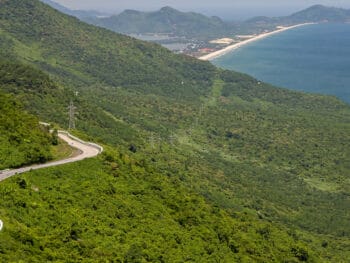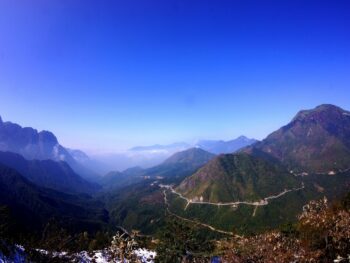Although people tend to think of beaches and coastlines when envisioning Vietnam, this country boasts an impressive array of mountain peaks and ranges. Located on the eastern side of the Indochinese Peninsula, the Annamite Mountain Range spans from south to north Vietnam, straddling the border with Laos.
List of Mountain Peaks and Ranges
The highest point in Vietnam is 3,143 meters (10,312 feet) at Fansipan Mountain in Sapa. This impressive elevation can even bring in snow during the cold days of winter in Vietnam’s high country. Other mountain town destinations include Da Lat in the south, serving the weekenders of Ho Chi Minh City, about a 9-hour trip.
Map of Mountain Peaks and Ranges
Mountain Passes and Routes
Take to the Vietnamese backcountry by way of a motorbike. These simple 110-150 CC machines are great companions if you choose a nice one with enough power to get up over the pass. Semi-auto works best for mountainous rural roads, as you can up-and-down shift for the hills.
Featured Mountains
Guide to the Beautiful Mountains of Vietnam

Aside from the miles of coastline and lively cities, Vietnam has some stunning mountain ranges that shouldn’t be dismissed on any trip to the country. While the terrain of the mountains varies by location, each area has something unique to offer visitors.
Whether you’re an avid hiker or just a casual sightseer with a love for the outdoors, there is something at each skill level for everyone. Tourists that aren’t into hiking can do some sightseeing in the mountains, too.
Mountains with Challenging Hikes
Bach Moc Luong Tu
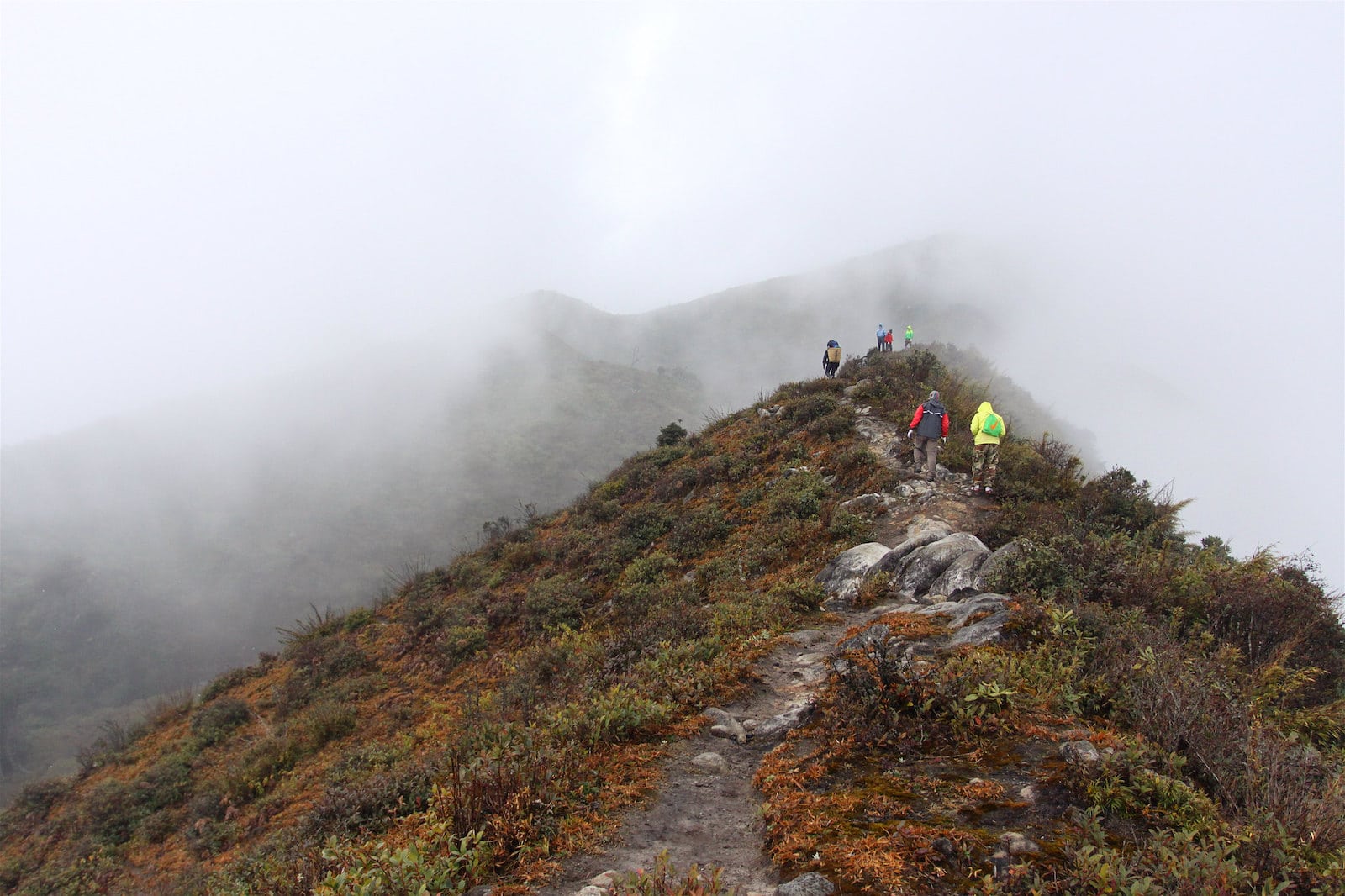
Located in the Northwest, Bach Moc Luong Tu Mountain is ideal for climbers and outdoors thrillists. It takes around two or three days to complete the path, which takes trekkers through mud, fruit, and bamboo forests. Once you reach the top at an altitude of 3,046 feet, the famous view of layered clouds will reveal itself and be worth the effort.
Tay Con Linh
The Tay Con Linh Mountain is located in a more rural area of the Ha Giang Province and is home to the Dao people. It takes about two days to hike to the top of the mountain, but the scenery is stunning and showcases the development of rice and green tea fields. The path itself can be challenging since it’s rocky and unpaved, but this shouldn’t be an issue for an experienced hiker.
Fansipan

Known as the “rooftop of Indochina,” Fansipan is Vietnam’s tallest mountain standing at 3,143 meters (10,312 feet) in elevation just outside of Sapa. Hardcore hikers and climbers love conquering Fansipan, as it’s gratifying despite taking at least two or three days.
It’s best to tackle this mountain between November and March when the weather isn’t as rainy and provides much safer conditions. For those who would like to experience the mountain without having to trek it, there’s a cable car ride that can bring visitors to the top in just 20 minutes.
Mountains with Moderate Hikes
Ba Den Mountain (Black Virgin Mountain)
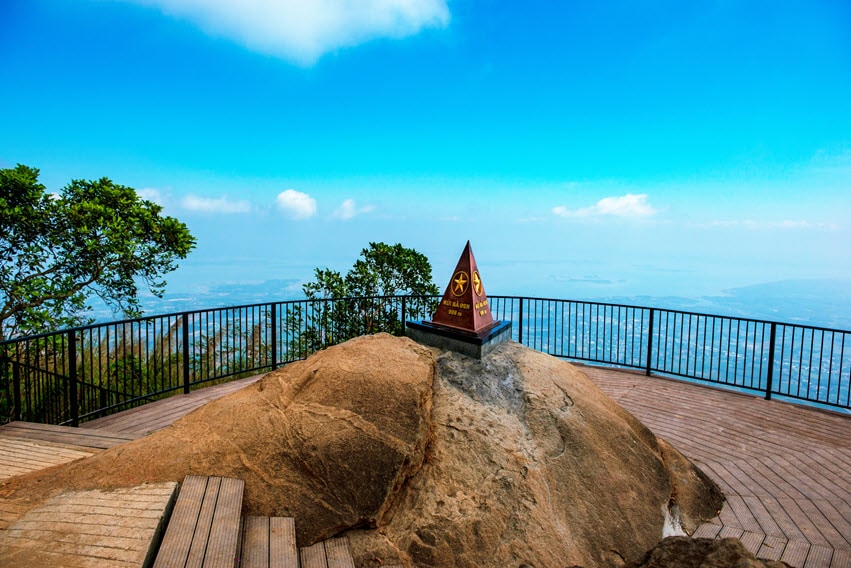
Visitors to Ho Chi Minh City that want to see some of Vietnam’s natural beauty can reach Black Virgin Mountain, the Southeastern region’s tallest peak, within two hours by car. Even though the top of the mountain is only 996 meters (3,234 feet) in elevation, it makes for a nice day trip to include exercise and sightseeing.
The footpath begins in a beautiful forested area that leads you to the Linh Son Thien Thach Pagoda, but those that would rather skip walking this part can take a cable car up to this point. The rest of the hike follows an uneven path that overlooks some fantastic views, a trip that takes about five to six hours in total.
Lang Biang

Located less than ten miles from Dalat’s city center, Lang Biang Mountain is among area’s most popular attractions for its natural beauty and ethnic cultures. One of the most frequented hikes that tourists like to do is the Lang Biang Peak, which has its challenging parts but is worth it for the views in the end. The recommended time of year to visit and hike` is between September and November.
Mountain Towns and Sightseeing
Son Tra Mountain (Monkey Mountain)
This mountain is ideal for visitors who are interested in sightseeing some of Vietnam’s breathtaking natural surroundings without having to exert much physical energy. There are two ways to get to the top, a footpath and motorway that weave through jungles on one side of the mountain and open up to the ocean on the other.
The name “Monkey Mountain” comes from the playful primates that you can find in the wild by the Linh Ung Pagoda near the parking area on the motorway.
Ngu Hanh Son Mountains (Marble Mountain)

Located in Da Nang, the Marble Mountains are a popular attraction for visitors looking to get some fresh air outside and see breathtaking scenery. The Ngu Hanh Son Mountains translate to the “Mountains of Five Forces,” but the most popular one is “Thuy Son,” which represents the element of water.
On top of Thuy Son is an ancient pagoda with 160 marble steps leading up to it, which is easy enough for people of all fitness levels to accomplish. Visitors are encouraged to wear sturdy footwear to climb up the steps and make the trip up them in the early morning or late afternoon when the weather isn’t as hot.
Sapa
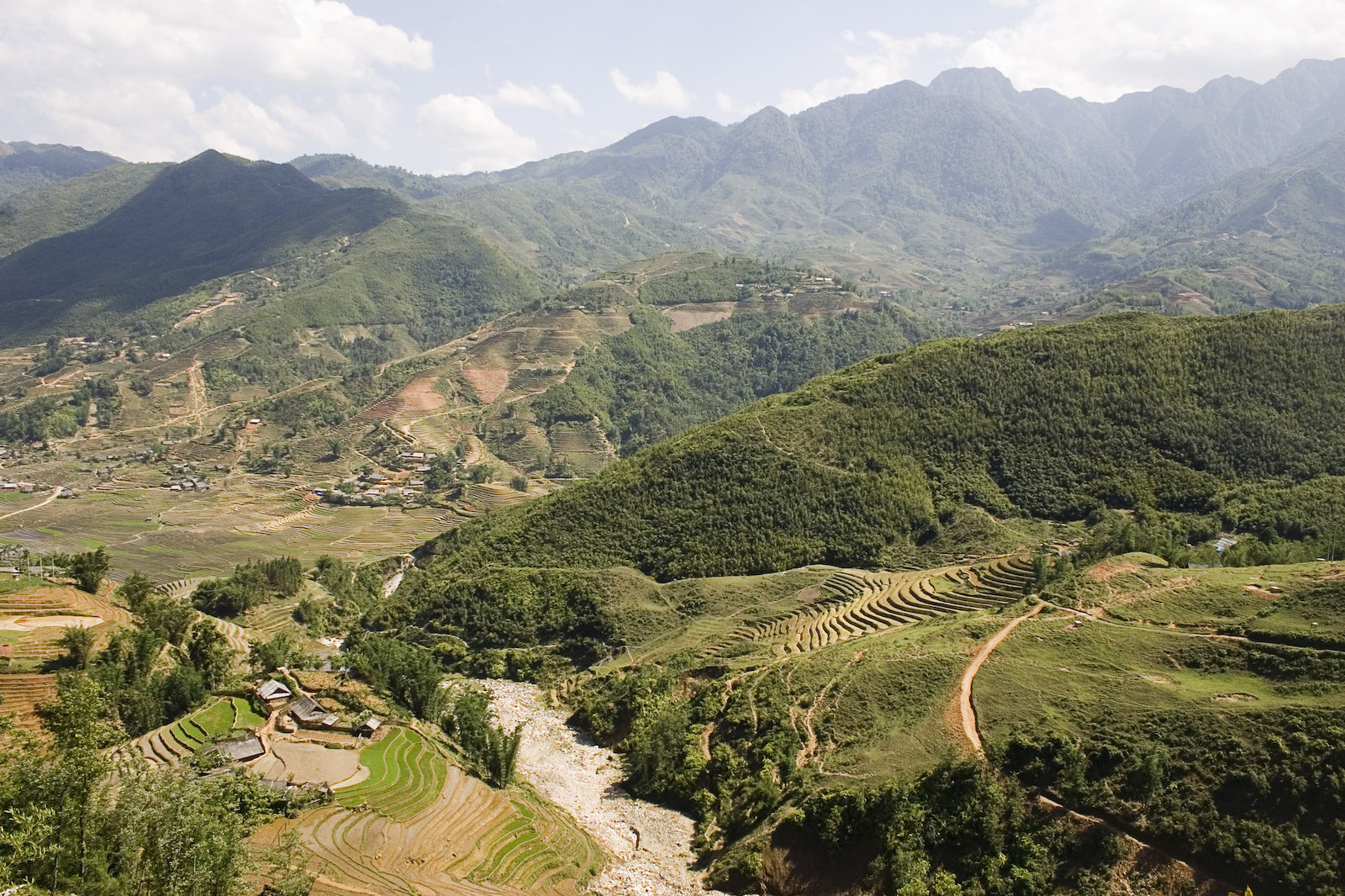
The mountain town of Sapa is one of the most popular destinations for locals and tourists looking for an escape from city life. It was initially established as a retreat location by the French in the early 20th century and is a fantastic place to do some biking, trekking, sightseeing, and shopping. Exploring the world-famous tiered rice fields is a great way to embrace the local ambiance in the summer and autumn seasons.
Ha Giang
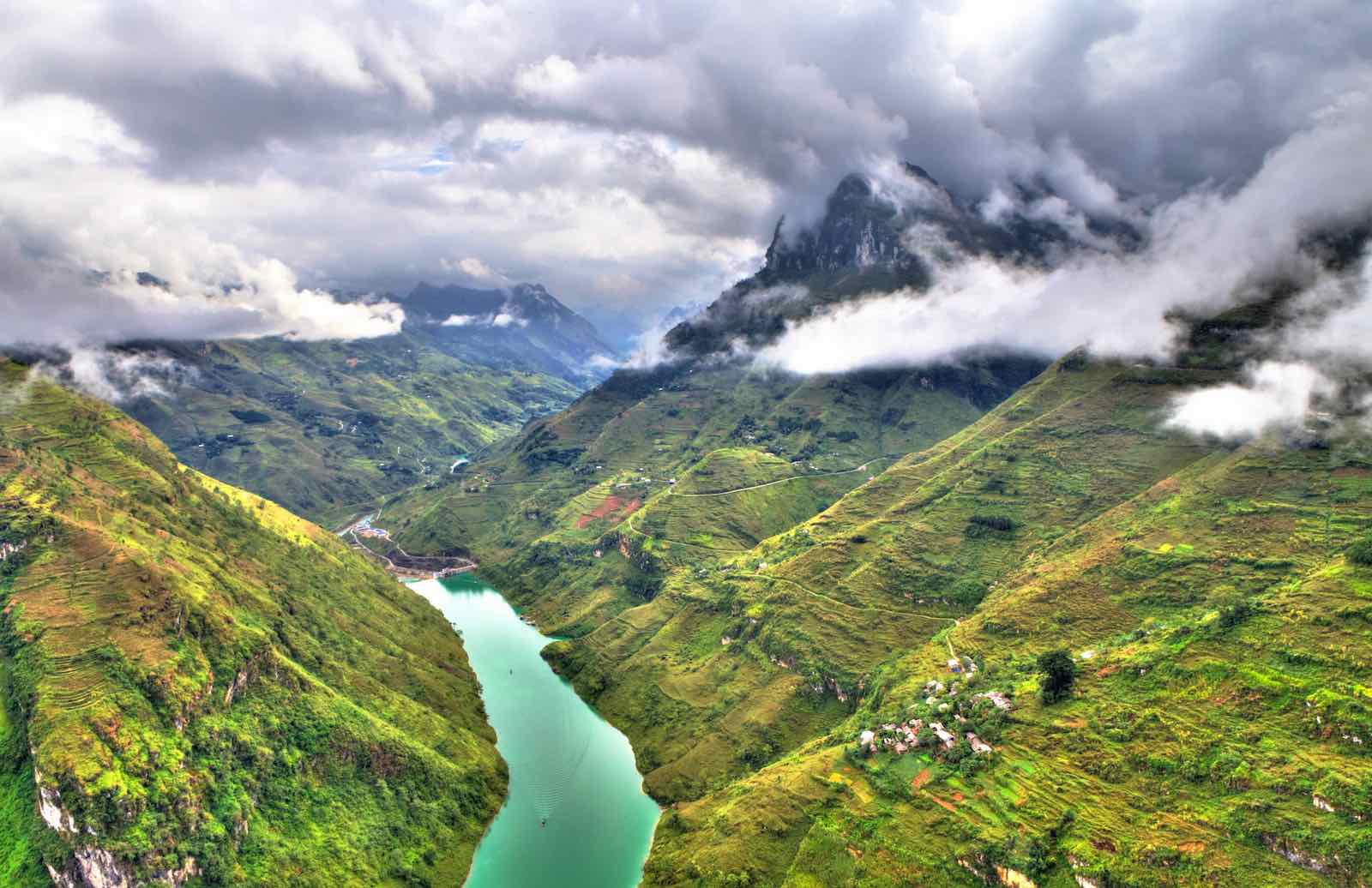
Ha Giang is one of the most economically challenged and scenic parts of Vietnam, located in the country’s northernmost province. Visitors love driving on the weaving roads that take them through some of the best views in this part of Asia, going through areas like the Ma Pi Leng Pass and over the Nho Que River. It’s often motorbiked as part of the Ha Giang Loop and is a great place to visit during the Lunar New Year when many festivals and cultural events occur.
As you can, no matter your location: southern, central or northern Vietnam, you’ll find some large mountains to retreat to. These high elevation peaks and alpine towns are one of the best ways to beat the heat and get a workout in.















